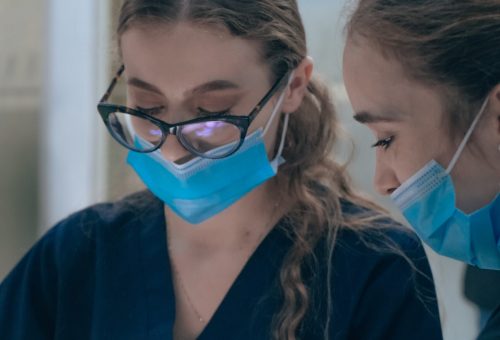Therapy/Prosthesis

Fixed Bridge
Zircon Swiss metoxit CAD/CAM. It is the newest and most modern method for designing teeth for patients. This latest word in technology brings perfection to the design of new teeth, increasing the quality of the work.
EOES German laser fusion. It is the newest and most modern method for 3D printing teeth. This cutting-edge technology eliminates any human errors in laboratories and enhances the precision of the work.
Zirconium frameworks made with CAD/CAM now surpass metal in its physical properties. Zirconium bridges created with CAD/CAM structures are highly efficient and aesthetic in the dental field. Some of its best properties include: it does not interact with other dental materials, it is 100% hypoallergenic and biocompatible, it is a good insulator from cold and heat, it perfectly simulates natural teeth, and it does not change color over time.

Fixed Prosthesis
- Crowns (which can be metal-porcelain, zirconium). Crowns are prostheses for single teeth, where the root is stored. Anchored to prepared teeth (abutment) or by means of endodontic screws to the root (Richmond crown).
- In bridges, the missing tooth is replaced by a prosthesis containing the removed tooth and the adjacent teeth, which are reduced to the abutment that is prosthetized. The missing tooth, along with the pillar teeth, forms the bridge.
- Implant-supported prosthesis: in this case, the root of the missing tooth is replaced with a titanium implant, and a fixed prosthesis is screwed onto it.
Frequently Asked Questions
Our practice stands out for the constant commitment to providing high-quality dental care, supported by a careful and attentive use of the best available prosthetic materials. Our attention to selecting top-quality materials is driven by the desire to ensure long-lasting, functional, and aesthetically satisfying results for our patients.
Zircon Prettau is a ceramic material produced in Europe in 2003. It is one of the most contemporary, aesthetically pleasing, and resistant materials to chewing forces. Zircon Prettau, the biggest advantage besides its strength compared to other zirconias, has the property of being produced in various shades like natural teeth. It is hygienic, odorless, and does not irritate the gums.There are removable and fixed types of prostheses. The latter is done when the prosthesis is attached to natural teeth or implants, while the removable prosthesis rests on the patient's gums, meaning it can be moved.The latest innovation (which has been around for years but has been more prominently featured in the last 10 years) is that previously fixed prostheses were applied only in the presence of natural teeth, whereas now, through implantology, they can be done in patients without their own teeth.Other innovations include the composition of materials, which aesthetically bring a prosthesis closer to natural teeth and gums (dissilicate, zirconia, alumina), or high-precision prostheses (veneers), allowing the exterior of teeth to be coated with a thin ceramic coating.
Functional: the patient should have good chewing and regular joint functions (opening, closing, left-right lateral movements, protrusion-retraction, and correct phonetics).
Resistance: the prosthesis must withstand chewing forces and be resistant to oral fluids.
Non-allergenic: it should be prepared with materials that do not harm the oral cavity.

